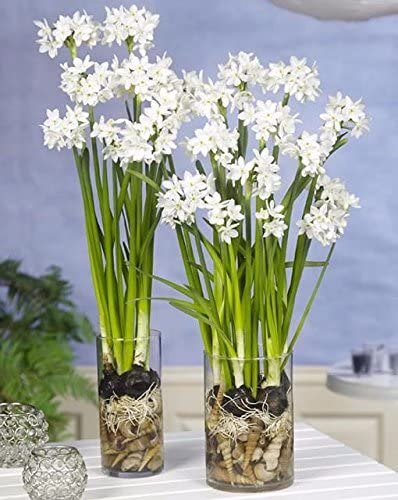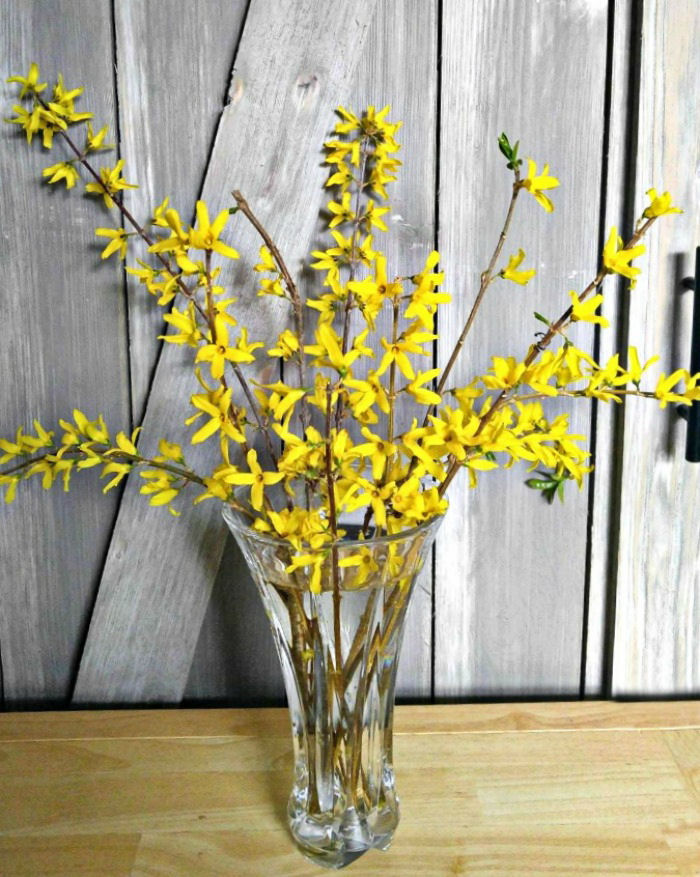Topic outline
-
 4-H Boots & Blooms will give you a chance to garden in the winter from the coziness of your home. We will "force" bulbs and twigs into blooming and create a plant propagation station for indoor plants. This series is intended to be introduced in the classroom (with a demo) and then materials sent home for children to play and practice at home and have conversations with family, friends, or neighbors. If you happended across this series and that it didn't come to you through your classroom - know that the materials list can all be acquired fairly easily.
4-H Boots & Blooms will give you a chance to garden in the winter from the coziness of your home. We will "force" bulbs and twigs into blooming and create a plant propagation station for indoor plants. This series is intended to be introduced in the classroom (with a demo) and then materials sent home for children to play and practice at home and have conversations with family, friends, or neighbors. If you happended across this series and that it didn't come to you through your classroom - know that the materials list can all be acquired fairly easily.There are three activities in this project. You may space the activities out to be one per week or move along faster if you wish. No prior experience needed, just follow the directions, practice, and share some of your results with friends and family!
To complete the project - please do all of the items in each of the topics. Each section includes a:
- "Discussion" - please use the question cards as a chance to think about the topic, talk with friends, family, and neighbors, and then - if you are willing, be ready to contribute to class discussion.
- "Lesson" - read or watch the information that is shared, and do the activity.
- "Check-in" - the check-in is a reflection or a little knowledge check (not a graded quiz!) - you can do the knowledge checks as many times as you want.
When the project is finished, complete the survey.
-
 While winter can be so fun, there are days that call for a jumpstart on spring. Our first two activities will be practicing what in horticulture is called "forcing" blooms. "Forcing", in this case, is defined as the art or practice of raising plants at a season earlier than the natural one.
While winter can be so fun, there are days that call for a jumpstart on spring. Our first two activities will be practicing what in horticulture is called "forcing" blooms. "Forcing", in this case, is defined as the art or practice of raising plants at a season earlier than the natural one. We will be using paperwhite bulbs. “Paperwhites” are a type of narcissus plant; closely related to daffodils. You will see a resemblance as they bloom. Their name comes from their very delicate white flowers. They are very easy to force, which makes them very popular. If you are interested in repeating this activity next year – look for bulbs at your favorite nursery in September or October. They tend to sell out quickly. The activity below will take less than an hour. Note that it may take about 30-40 days for your bulbs to bloom indoors, depending on the temperature of your house, lighting, etc.
In this activity, I'm inviting your family to consider what "forcing a plant" might mean, to observe, and to anticipate together. Oh...and have fun :)...it is really fun to think and grow together.
-
In horticulture, we can "force" plants to grow or bloom out of season. What image comes to mind when you think of "forcing blooms"? Consider the details - what could be involved? What could go wrong? Talk about your ideas with your family. Draw a picture! It is okay to take this in a light or serious way.
If you are willing, be prepared to share your ideas with your class.
-
Lesson: Planting Paperwhites
Materials:
Supplied:
- 6 paperwhite bulbs
- potting soil
- rocks for drainage
From your home:
- water
- large bowl or tub for mixing soil and water
- 2 containers for planting your paperwhites (or you may wish to vary how many bulbs you plant together, which will change how large of a container that you use)
- spoon or scoop for prepping the soil (I often use a container that is headed for recycling)
Steps (instructions are for preparing two pots with 3 bulbs each, planting bulbs in soil; adjust as needed):- Prepare a surface to work that is okay to get dirty (ex. remove table cloth, or put down plastic covering).
- Gather all supplies.
- Put soil in large bowl or tub, add 1 cup or so of water and mix. Soil should start to clump but should not be wet. Let this sit for roughly 10 minutes to allow water to be absorbed in your soil.
- Add 1" or so of rocks to the bottom of your plant pots.
- Add 3" or so of soil to each plant pot.
- Add 3 bulbs, root sides down to the plant pot. "Root" them in...pushing them in enough so that they stand up.
- Add more soil to the top of your plant pot, so that the shoulders of your bulb are still showing.
- Tuck your bulbs in; and wish them good luck :).
- Place the container in a cool, dark location for two weeks and then move to a warmer, sunny area. Once they start to bloom - find a cool location for the longest-lasting blooms.
- Continue to replenish water as
needed.
Below is a short video showing the steps for planting your paperwhites.
-
-
 In addition to bulbs, we can force branches to bloom inside. All of this takes patience, curiosity, and the willingness to try something that might not work (just telling you the truth). I say that because there are a lot of variables - what shrubs you know you have (and can identify in the winter), how cold it is the day that you prune your shrubs, how warm it is in your house, how often you change the water - etc. All that said - it is gratifying to have blooms in the house in the winter and the activity will build a relationship between you, your yard, and how you feel about winter.
In addition to bulbs, we can force branches to bloom inside. All of this takes patience, curiosity, and the willingness to try something that might not work (just telling you the truth). I say that because there are a lot of variables - what shrubs you know you have (and can identify in the winter), how cold it is the day that you prune your shrubs, how warm it is in your house, how often you change the water - etc. All that said - it is gratifying to have blooms in the house in the winter and the activity will build a relationship between you, your yard, and how you feel about winter. Below are directions and a short tutorial on how to prune and force forsythia branches. Forsythia is a common shrub found in New York State. Forsythia blooms early in the spring - and instead of leafing out first, they blossom with bright yellow flowers. The shrubs are a bit wild and crazy - you will see my shrubs in the tutorial. For reference, I planted Forsythia twigs 5 years ago and now have an 8 ft tall hedgerow...allowing plenty of branches to prune for this project (reach out if you are local to Moravia and need some).
Enjoy!
Photo credit: The Gardening Cook
-
Take a walk with your family or friends around your yard and neighborhood. What kinds of shrubs do you recognize? Do you have lilacs? Pussywillow? Rose of Sharon? What kind of flowers will come from them? You remember the color or the smell of the flowers but not the kind of flower, or you may say..."I have no idea!" and that is okay too!
If you are willing, be prepared to share your ideas with your class.
-
Lesson: Forcing Forsythia
Materials:
From your home:
- Pruning shears
- Forsythia bushes with lots of buds
- Bucket
- Vase
- Water
- Hammer
- Wood or something to hammer on
Steps:- Do this on a warm-ish (over freezing) day in January or February.
- Prepare a surface to work that is okay to get dirty (ex. remove table cloth, or put down plastic covering).
- Gather all supplies.
- Prune 2-3 foot sections of branches - look for branches with a lot of buds.
- Prune off ends at an angle.
- Pull off small shoots and buds from the bottom 6-8 inches of branches.
- Put in a bucket of warm water.
- Re-trim ends at an angle.
- Pound the bottom of the branches to aid with water absorption.
- Put branches in a bucket or vase.
- Continue to replenish water as needed (every other day or so as water looks cloudy or smells bad).
- Place branches in a sunny location.
- It could take 2 weeks to 1 month for blooms to show.
Below is a short video showing the steps for Forcing Forsythia
-
-
There was a time not long ago when I stopped growing houseplants... I just felt bad because occasionally they just didn't do so well. Well, it really doesn't matter if you think you have a "brown thumb" (can't grow plants) or a "green thumb" (everything grows well)...trying to propagate houseplants is really interesting...and inexpensive. Once you become interested in propagating plants, your eyes will be on the search for others with houseplants each time you visit a friend or a family member. Ask if they might share a clipping, or share some of your clippings with them. This activity is another chance to observe, and share what you are learning with others.
In this activity you will start a propagation station, and eventually re-pot some houseplants of your own.
-
Step one for this activity is to think about where you have seen houseplants - do you have houseplants in your house? How about neighbors, friends, and family? Talk with your family about what you can recall...and who really loves taking care of their plants? Who doesn't? What kind of plants do they have? Do you have any funny stories about houseplants?
If you are willing, be ready to share your response with your class.
-
Lesson: Houseplant Propagation Station
Materials:
From your home:
- scissors
- water
- cups, mason jars, or vases
- plant clippings
- Prepare a surface to work that is okay to get dirty (ex. remove table cloth, or put down plastic covering).
- Gather all supplies.
- Trim pieces from your plants with 4-5 leaves on the stems.
- Remove the bottom 2-3 leaves.
- Place the stems in water.
- Continue to replenish water as
needed in coming weeks.
- Plant your cuttings once they have a decent rooting system.
Alternatively, for succulents (jade, kalanchoe, decorative succulents...) you may:
- Break off a "leaf".
- Let the leaf sit and dry for a day or so.
- Sit the leaf on top of the soil (I usually do this right in the pot where the mother plant is from...but you might have a small tray of soil).
- Warning this could take 1-2 months.
- Wait for roots to appear.
- Once the roots are substantial and the leaf begins to die back, you may plant this in a pot of its own.
Below is a short video showing the steps for propagating house plants.
-
-
-
here
Wrapup:
Is it spring yet? Any closer than when we started :)? I hope that you have had fun working on this project together - maybe you have learned something, shared a smile, or observed something cool. Doing, talking, exploring....are all wonderful ways to learn together.
Please do: take or draw pictures of your projects and bring them into class or share here! That will allow for us to all learn and grow together.

If your activities didn't go as planned - remember some you win, some you lose (can't tell you how many houseplants have not made it in our house...it is OK!). Learning by doing gives space for learning from every experience.
-
Thank you so much for participating in this project with me and with each other! I really hope that gardening in the winter becomes something you do or share with friends and family. Be sure to observe, plan, and plant + repeat: Check-in on your forced plants (be sure to water the bulbs as needed and change the water on your forsythia branches), and be on the lookout for houseplants to propagate!
Happy Gardening!

-
